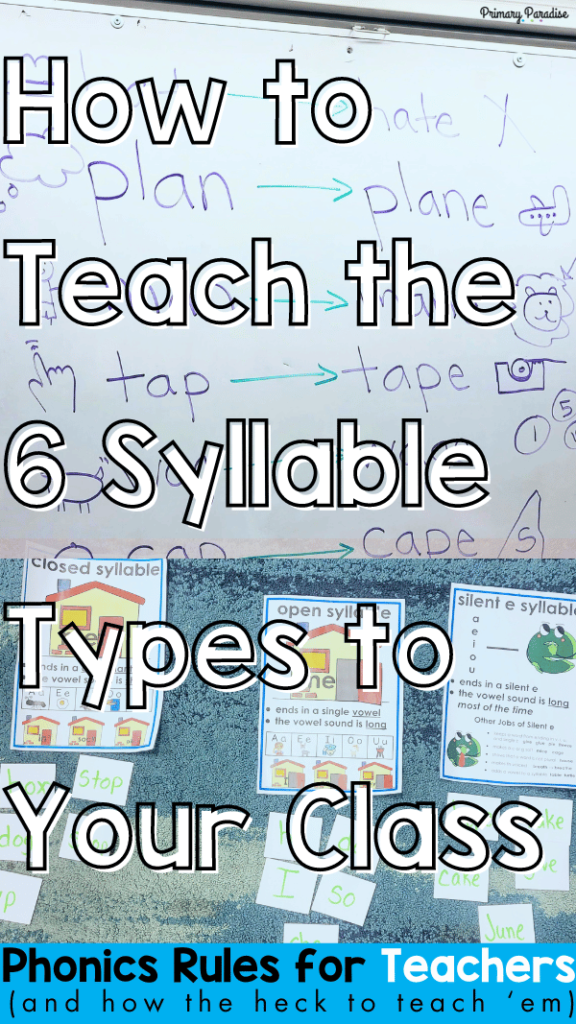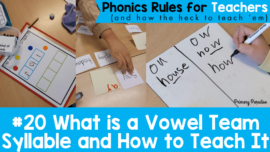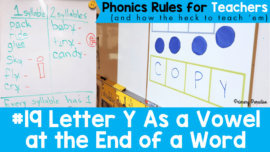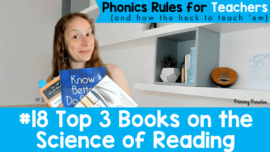If you’re wondering, “How do I actually teach the 6 syllable types?”, you’re in the right place. So far we’ve learned why you need to teach syllables and the basics of each type of syllable. Now it’s time to learn how the heck to teach ’em.
This is post 6 in my series Phonics Rules for Teachers (and How the Heck to Teach ‘Em). If you’d like to see previous posts, you can click here.
Would you rather listen or watch? Find a podcast version of this blog post here, or watch the video below.
5 Strategies for Teaching Syllables and Syllable Types
Here are 5 strategies to help you teach syllable types to your students. In future posts, I will share more in-depth information about syllable types, but here are some general ideas.
1. Start by teaching students to count syllables
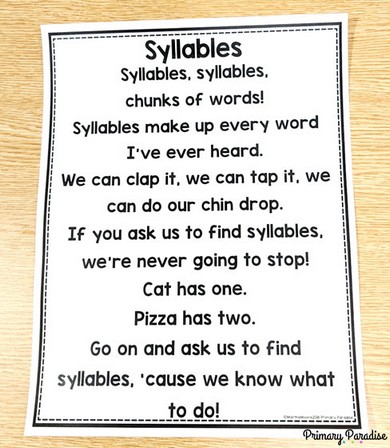
Students can’t identify specific types of syllables if they can’t hear syllables in words. So, begin by teaching students what a syllable is- a beat in a word. I personally like to show students a few different ways to count syllables- clap, tap, chin drops, or humming- because different strategies work better for different kids. However, it is important that you count syllables in a different way than you count sounds so they don’t get confused. I like to use this chant when introducing syllables. (Available here in my free resource library.)
I find it works best to start by just identifying syllables orally, than you can move on to looking at written words. Orally, even very young students can identify the number of syllables in 1,2,3 even 4 syllable words. We practice counting syllables in our class’ names, favorite foods, animals- anything we can think of. It’s a great waiting in line game.
2. Teach syllable types in a logical order along with spelling patterns
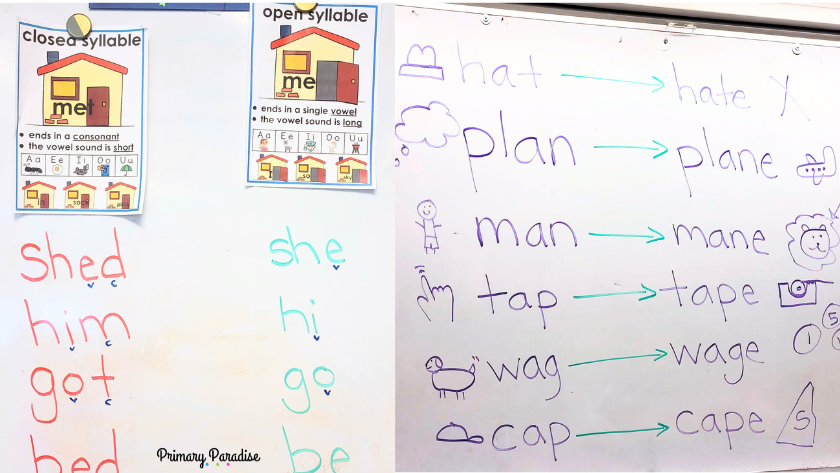
I will delve into how specifically to teach each syllable type in future posts, but the biggest thing you can do to benefit your students’ reading and writing is to embed syllable type instruction right into your phonics instructions. As you’re teaching about CVC words and short vowels, introduced closed syllables. From there, when you begin to talk about long vowel sounds, introduce open syllables. When you’re learning about CVCe spelling patterns, teach your student about the silent e syllable and the different jobs of silent e. When you connect the spelling patterns you’re teaching to the different syllable types, it will strengthen your students reading and writing skills overall.
3. Use hand motions for syllable types

I’m a big believer in hand motions to help students remember important information. Here are the hand motions I use with my students for each syllable type.
- Closed syllable- put hands parallel to each other and then turn palms to your face to show a door closing
- Open syllable- (the opposite action)- palms are in front of you facing your body and then pull to palms out to show a door opening
- Silent e syllable- finger on your lip
- R controlled syllable- drive a steering wheel with your hands
- Vowel team syllable- link your thumb and pointer finger on each hand to make a chain
- Consonant le syllable- put one arm up to show an “l” and a finger to your lip for the silent e
Find this visual and more in the How the Heck to Teach ‘Em Phonics Resource.
4. Word Sorts
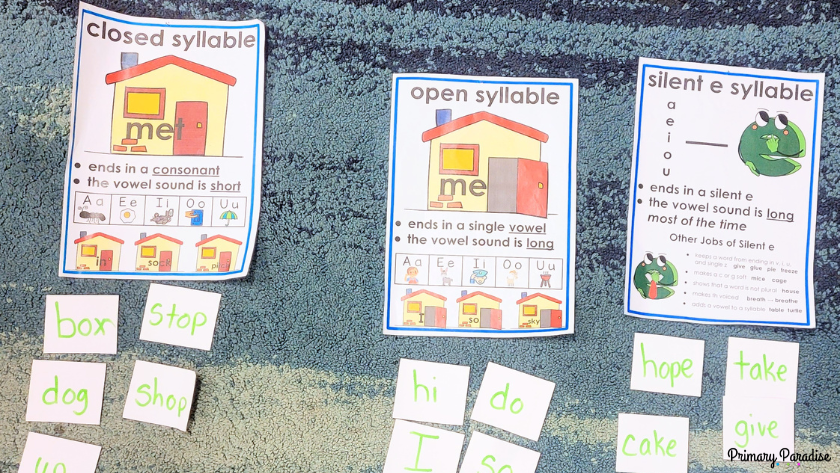
Word sorts are a great way to reinforce syllable understanding. For example, when you’re working on open and closed syllables, you can have students sort words into each category. You can do a whole class 3, 4, 5, 6 corners syllable sort depending on how many syllable types you know. Having students look at words and syllables and sort them by type will help them focus on the spelling patterns in the word and what it means for how it’s read.
5. Continuously review syllables

As with everything, continuously reviewing and going back to previous knowledge and using it in action will help students solidify their knowledge. When you’re modeling decoding, you can model using syllable type knowledge to figure out a new word. You can do the same when you’re modeling writing. I often use these fluency passages in my classroom, and we will look at the syllables of words we find tricky and break them down. This helps me see what syllable types specific students might need more work on and which ones they understand well.
Let’s Sum It Up
Here’s what we’ve covered:
- A syllable is a beat in a word. Every syllable has only one vowel sound.
- Teaching students the 6 syllable types will greatly improve their decoding and encoding skills.
- The six syllable types are: closed, open, r-controlled, silent e, vowel team, and consonant le
- We can teach syllables and syllable types right along with spelling patterns. We can follow a logical order and review often.
